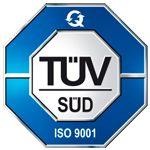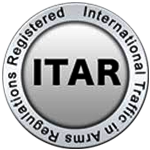Understanding Passive RFID Tags: How They Revolutionize Inventory Management
In today's fast-paced business environment, efficient inventory management is paramount for success. A revolutionary advancement in this field is the use of Passive RFID Tags, which have transformed traditional tracking and inventory systems. Unlike their active counterparts, Passive RFID Tags require no internal power source, instead harvesting energy from the RFID reader's signal, making them a cost-effective and sustainable solution. These tags enhance visibility and accuracy throughout the supply chain, allowing businesses to streamline operations, reduce human error, and improve overall efficiency. In this article, we will explore the functionality and benefits of Passive RFID Tags, outlining how they can be effectively implemented to revolutionize inventory management practices across various industries. Understanding how to leverage this technology can provide businesses with a competitive edge in a rapidly evolving marketplace.
How Passive RFID Tags Work: The Technology Behind the Revolution
Passive RFID tags represent a significant advancement in inventory management technology. Unlike active tags, which have their own power source, passive RFID tags derive energy from the electromagnetic field generated by an RFID reader. When a reader emits a radio signal, the tag captures this energy, allowing it to transmit its stored information, such as a unique identifier or additional data points. This interaction occurs without direct contact, enabling rapid and accurate data collection across a wide area.
The simplicity of passive RFID technology provides numerous advantages for businesses. These tags are generally smaller, lighter, and more affordable than their active counterparts, making them ideal for attaching to various items in a retail or warehouse setting. Furthermore, passive RFID tags can be read simultaneously even in large quantities, significantly speeding up the inventory process compared to traditional barcode scanning. As a result, businesses can maintain better inventory accuracy, reduce lost items, and enhance overall supply chain efficiency, revolutionizing inventory management practices across various industries.
Key Benefits of Using Passive RFID Tags for Inventory Management
Passive RFID tags are transforming inventory management in significant ways, providing businesses with a streamlined approach to tracking their assets. One of the key benefits of using these tags is their cost-effectiveness. Since passive tags do not require a battery and can be produced at a lower cost compared to active tags, companies can deploy them on a large scale without breaking the bank. This allows for more extensive tracking of products, ultimately leading to improved operational efficiency.
Another major advantage of passive RFID tags is their ability to enhance visibility in the supply chain. With the capability to read multiple tags simultaneously, inventory can be managed in real-time, reducing errors and discrepancies. Companies can swiftly identify stock levels, locate items, and forecast demand accurately. This ensures that businesses remain responsive to customer needs while minimizing excess inventory.
Tip: Implement passive RFID tags in phases to gradually assess their impact on inventory management. Start with high-value items to monitor changes in accuracy and efficiency before scaling up.
Tip: Regularly train staff on how to effectively use RFID systems. This enhances the technology's effectiveness, ensuring everyone understands its benefits and operational procedures.
Steps to Implement Passive RFID Tags in Your Business
Implementing passive RFID tags in your business can streamline inventory management significantly. Start by conducting a thorough assessment of your current inventory processes. This evaluation helps identify specific areas where RFID technology can bring the most benefits. Consider factors such as item turnover rates, storage layouts, and existing tracking methods.
**Tips:** Always involve your team in this assessment. Their insights about daily operations can highlight practical challenges that RFID implementation should address.
Next, choose the right RFID hardware and software that align with your business needs. Opt for solutions that offer scalability, so they can grow with your operations. Engage with suppliers to understand various tag options based on your inventory type and environment, as passive RFID tags come in various forms tailored for different conditions.
**Tips:** Before finalizing a system, prioritize running a pilot program. This trial phase will allow you to test the technology in a controlled environment, helping to pinpoint potential issues while ensuring team readiness for a full rollout.
Understanding Passive RFID Tags: How They Revolutionize Inventory Management
| Parameter | Description | Benefits | Implementation Steps |
|---|---|---|---|
| Tag Type | Passive RFID tags require no internal power source, relying on energy from the RFID reader. | Low cost; Long lifespan; Lightweight. | Identify your inventory items to be tagged. |
| Frequency | Operates typically in low (LF), high (HF), or ultra-high frequency (UHF) ranges. | Long read ranges depending on frequency; Versatile application. | Select the appropriate frequency for your application. |
| Read Range | Read range can vary from a few inches to several meters based on the RFID system. | Improves scanning efficiency and accuracy. | Conduct a site survey to determine optimal placement. |
| Data Storage | Can store a unique identifier and some additional information. | Reliable identification and tracking of assets. | Choose the right data management system for processing records. |
| Integration | Can be integrated into existing inventory and asset management systems. | Enhances existing workflows and productivity. | Plan for software and training to support the new system. |
Common Challenges and Solutions When Using Passive RFID Tags
When integrating passive RFID tags into inventory management, businesses often face several challenges. One common issue is the interference from metal objects or liquids, which can disrupt the RFID signal. To mitigate this, companies should consider using specialized RFID tags designed for tricky environments. Additionally, placing tags away from dense materials can enhance read rates and overall system performance.
Another challenge is the tag's read distance, which may not be sufficient for larger warehouses. To address this, utilizing fixed RFID readers with high-power antennas can extend the effective read range. This setup allows for greater flexibility in inventory tracking across vast spaces, ensuring accurate data collection.
**Tips:** Regularly audit your RFID setup and environment to identify areas for improvement. Training staff on the proper handling of RFID equipment can also enhance operational efficiency. Lastly, leveraging software that combines RFID data with inventory management systems can streamline processes, offering real-time visibility that is crucial for effective decision-making.
Future Trends of Passive RFID Technology in Inventory Control
The landscape of inventory management is on the cusp of transformation, with passive RFID technology leading the charge. As businesses strive for greater efficiency and accuracy, the future of passive RFID systems promises significant advancements. One emerging trend is the integration of artificial intelligence with RFID technology, enabling real-time data analysis and predictive inventory management. This synergy could result in dramatically reduced stockouts and overstock situations, as inventory levels can be monitored and optimized instantaneously, facilitating a more responsive supply chain.
Another key trend is the miniaturization and cost reduction of passive RFID tags, making them more accessible to small and medium-sized enterprises. As these tags become cheaper and smaller, a broader range of products can be tagged and monitored. This increased adoption will lead to enhanced visibility throughout the supply chain, empowering companies to make informed decisions based on accurate data. Furthermore, advancements in reader technology will enable longer read ranges and faster scanning capabilities, streamlining inventory processes and enhancing operational efficiency. The future of passive RFID in inventory control is poised to redefine how businesses manage their stock, making operations smarter and more sustainable.
Inventory Management Efficiency with Passive RFID Technology
Passive RFID technology significantly boosts inventory management efficiency, as illustrated by the marked increase in inventory accuracy from 70% before implementation to an impressive 95% after.
NORTH EASTON MACHINE • 218 Elm Street • North Easton, MA 02356 • 508-238-6219

